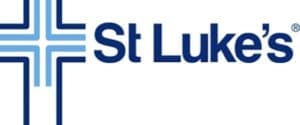
President Obama signed the Affordable Care Act into law in 2010. The new law meant that the way medical systems operated had to change. Expanded health insurance coverage led to increases in the demand for care. The ACA led to a move away from fee-based services and toward compulsory value-based payment initiatives. This lowered hospitals’ margins and created an impetus for hospital chains to begin to tackle costs, but to do so in a manner that did not compromise patient outcomes. Procurement became a logical place for leading healthcare systems to focus.
Adrian Wengert joined Saint Luke’s Health System in 2014. There are several St. Luke’s hospitals across the nation. Mr. Wengert works at the St. Luke’s system headquartered in Boise. This is Idaho’s only not-for-profit, community-owned, and community-led healthcare system. With 16,000 employees, it is the largest private employer in the state. The system runs 8 acute care hospitals and has 300 ambulatory medical centers across the state.
As vice president of supply chain and procurement, Mr. Wengert was brought in to drive change. Hospital chains’ approach to procurement lagged far behind the practices employed by manufacturers, retailers, and distributors.
“We didn’t have enough strategic personnel,” Mr. Wengert said. “We added about 20 positions, all strategic hires largely from outside healthcare. That was by design to help us solve problems that needed a different lens.”
Procurement was a natural place to focus. In healthcare, large, powerful distributors sell hospitals medical supplies and deliver those supplies right to individual medical facilities. In many healthcare systems, the costs of these supplies and services were not closely examined. The costs were passed down the line to patients and insurers. As a result, hospital chains largely lacked competence in sourcing. And yet, after labor costs, medical supplies are the second largest cost.
St. Luke’s began to build new supplier relationships. “We built strategic supplier partnerships.”
The net result of that was about $100 million in savings over the course of 10 years.
These are great results. For those who know healthcare systems, they are astounding. Physicians have traditionally had large amounts of autonomy in what they prescribe and what medical supplies they use. My wife, who worked as a vice president in different hospitals, has told me that one key to hospital executives retaining their leadership positions was following a simple rule, “Don’t piss off the docs!”
Mr. Wengert was more diplomatic. “In manufacturing, engineers are typically at the top of the food chain. In healthcare, physicians are.”
How did St. Luke’s accomplish this? “We reestablished strong collaborative relationships with our internal stakeholders, which largely are comprised of clinicians and physicians,” Mr. Wengert said.
“How do you begin to build those relationships so that you can drive item standardization? You can have meaningful decisions that are not purely based on cost. They have to be based on product efficacy. You have to look at outcomes, quality, complications, all of those things. So, we started working on clinical integration as one path” to drive procurement savings.
Mr. Wengert explained that medical chains have two types of procurement models. “The first is the command-and-control model.” In this model, “the supply chain goes out and negotiates a contract on spine implants and says to doctors, ‘You’re now going to use Medtronic.’ We did it because we saved a couple of million dollars. And while the savings hit the bottom line quickly, over time, it erodes physician engagement and, even more importantly, physician alignment.”
“You cannot sustain that” model. “No physician wants to lose their autonomy. They don’t want a businessperson telling them how to practice clinical medicine.”
The other model, Mr. Wengert explained, is the influence model. In this model, you are presenting the surgeons with all the options. “One option is we do nothing; we stay status quo. This is what it looks like.”
“Option two is always standardization. If we go from six suppliers down to three, this is how it affects price and ultimately helps you build a deeper partnership.”
Why should physicians care about a deeper relationship with a supplier? During COVID, there were many shortages that made it difficult to practice good medicine. Better supplier relationships help ensure that goods will be delivered in full and on time. Doctors may not care about costs, but they do care about achieving certainty of supply.
This model empowers decision-making committees focused on specific spending categories like spine implants or knee replacements. “We’ll be strategic about how we form the membership. So, if we’re asking them to standardize to one brand or another, we try to identify surgeons who use both brands to ask them for their clinical feedback. ‘What do you think about this?’”
“But you always have some surgeons who say, ‘This is what I want to use.’ We have really strong physician champions in our organizations. Sometimes they’ll lean in, and have a discussion, and it usually resolves itself.”
St. Luke’s also has six nurses embedded in the supply chain team. “They speak the clinical language. That helps us have a greater degree of success.”
“Then lastly, we onboarded a medical director of supply chain. And she’s just been fantastic.” She explains to the physician community the “total benefit of what we’re trying to achieve for our patients.”
St. Luke’s is not resting on their laurels. They are moving to a self-distribution model that further lowers their reliance on costly distributors. They have built a warehouse with material handling systems and a warehouse management system from Tecsys. Inbound supplies will flow into the warehouse and then be delivered to medical facilities across the state. The warehouse will be operational by the end of the year.




















